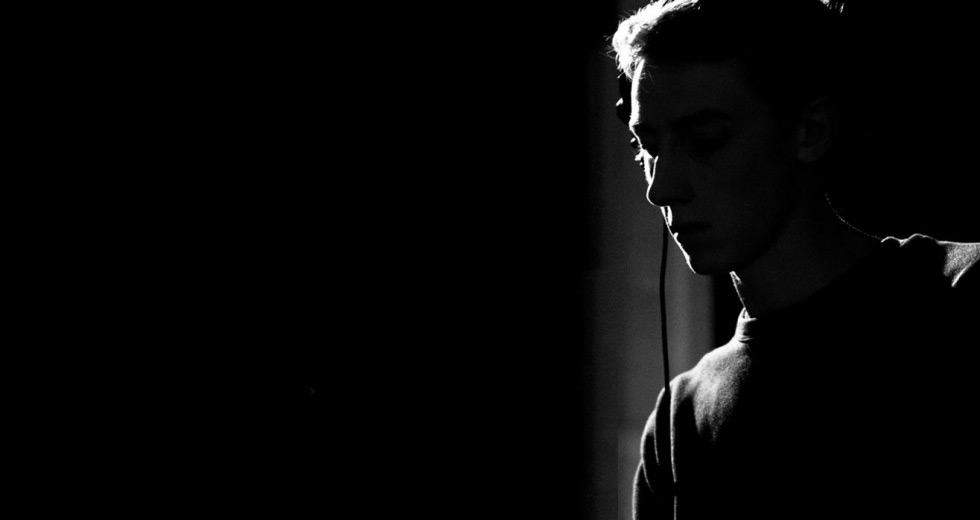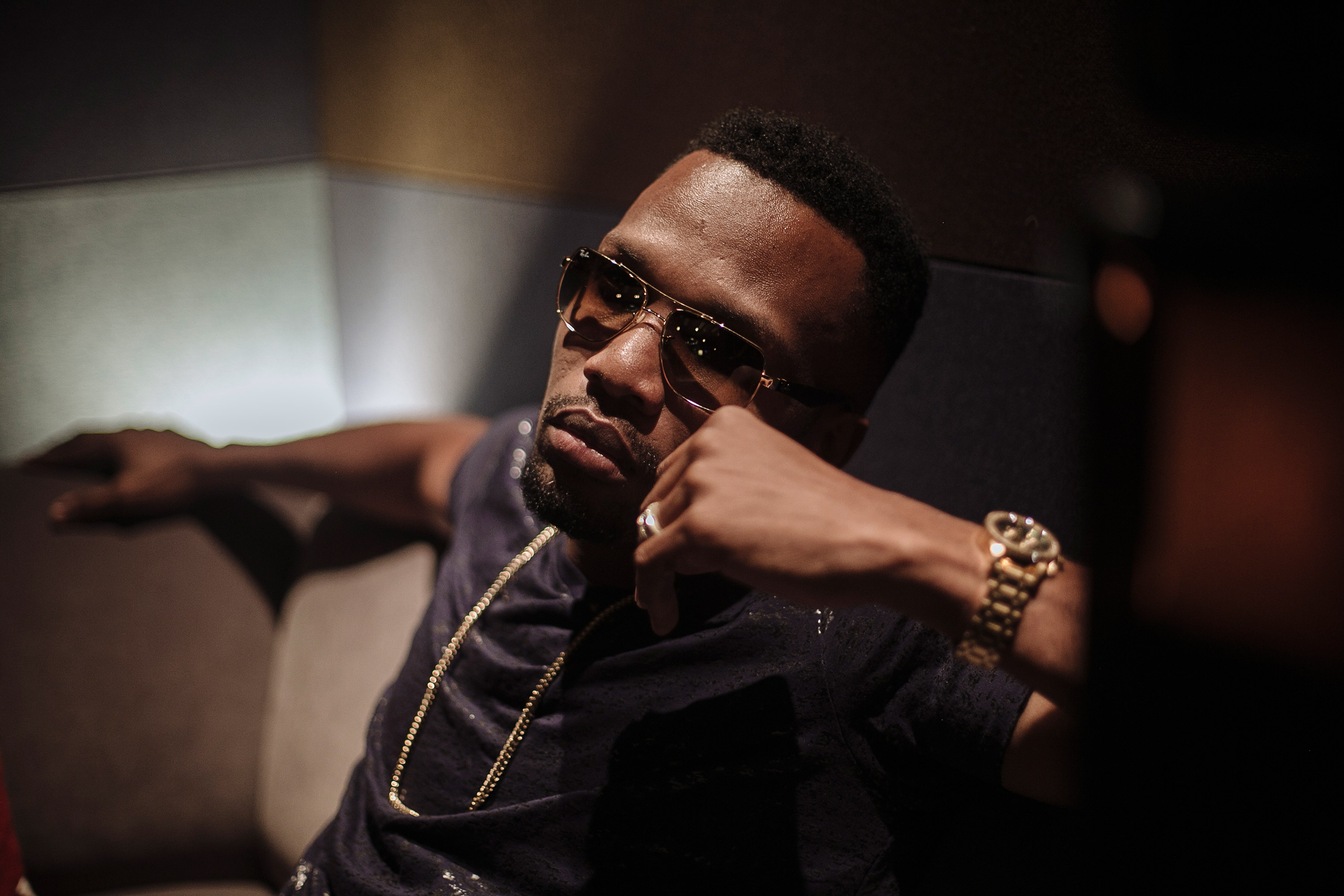Interview: Joel Vandroogenbroeck of Brainticket and Coloursound
We speak with the quietly prolific, ingenious and notoriously underrepresented electronic psychonaut
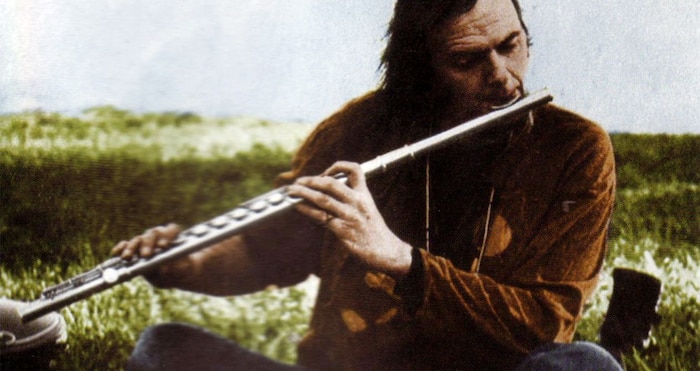
It’s 1980, and nestled in the mountainous terrain of Munich, Germany, Gunter Greffenius’ upstart production music label Coloursound Library releases their debut album. Capitalising on the success of Ridley Scott’s Alien film, the label dropped Biomechanoid, featuring cover art commissioned by HR Giger – whose horrific Necronom IV lithograph served as the basis for the design of Alien – and the music of the relatively unknown Joel Vandroogenbroeck. Comprised of bleak, cinematic synth soundscapes and percussion, the album served as an inaugural calling card for what would be a decade of dizzying solo releases by Vandroogenbroeck for Coloursound, running the gamut from Mesopotamian ethno-folk to synth sequencer funk to electro drum breaks to in-utero ambient delights. But to stop there would be selling him short.

Though the Belgian-born Vandroogenbroeck, 74, may not be a household name; in an ideal world, he would be. As the founder, flautist, harpist, sitar player and keyboardist of the seminal acid-fried Swiss psych outfit Brainticket, he spearheaded the groups three main (and collectible) releases in the early 70s – Cottonwood Hill, Celestial Ocean and Psychonaut. Combining a love of exotic instruments coupled with mind-bending out-of-body excursions, the ever-changing collective developed something of a cult following throughout Europe and earned a reputation as one of the heavier psych outfits on the circuit – which was something of a double-edged sword. While their experimental sound resonated with hippies everywhere, it didn’t with the authorities, who associated the act with heavy drug consumption and subsequently began a ban of their music, especially the Psychonaut album, if for the title alone. After that bitter brush with censorship, the group quietly disbanded in 1972.
After the dissolution of Brainticket, Vandroogenbroeck departed for the island of Bali with the intent of learning to build and play the gamelan – an ensemble of primarily percussion instruments from Indonesia. It would become yet another weapon in his ever growing arsenal of exotic instruments: he was already proficient in the sitar, harp, kalimba, assorted percussion oddities and all woodwinds by this point. Vandroogenbroeck became so enraptured with the frenetic sound of the gamelan that he subsequently left the tropics to start up a joged bumbung (a variation on a gamelan) band back in Switzerland. While playing small festivals and civic events with this group, Joel began to slowly gravitate towards the synth-heavy kraut sounds of artists like Tangerine Dream and Klaus Schulze at the same time. And once he began dabbling with oscillators, he never turned back. After inking a library deal around this time with the nascent Coloursound label, who gave him complete creative control, Vandroogenbroeck began turning out releases at a rapid rate, often three to five a year, and under a variety of aliases like V.D.B. Joel, J.V.D.B, and Eric Vann. Starting with the desolate synth drone of Biomechanoid, he continued to expand his sound palette on while on Coloursound, moving from early arpeggiators on Computer Blossoms to percussive sound collage on Birth Of Earth; and from Oberheim DMX drum breaks on Video Games & Data Movements to Apple II ambient programming on Digital Project (one of his best).
We spoke with Joel, a Mexican resident since 1984, about his strange journey through sound.
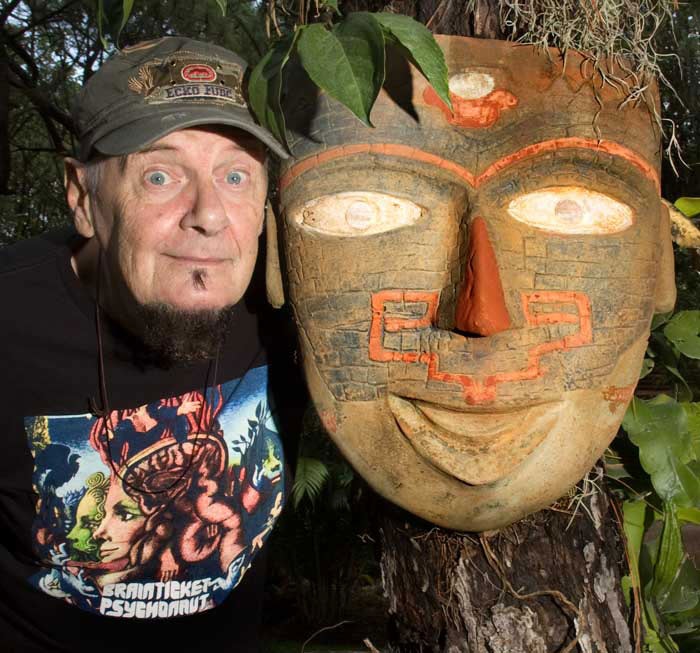
RBMA: A lot of people know you predominately through your work with Brainticket, so let's talk about that first. The band's lineup was always changing, and Brainticket was always more of a community than a band, right? Can you briefly talk a bit about the ethos behind the band?
VANDROOGENBROECK: That is correct, Brainticket was seen more as a community than a band. Ever-changing exterior events made it that way. It was also the wave at that time to meet and experiment with new people, and these were extremely creative times where everyone had something to say and wanted to create new projects. With all this in the air, the ideas were also very disorganized and volatile at times. But overall, yeah, we were more dedicated to the sound than a “band”.
RBMA: And how was your music received at the time? It was banned several times, correct?
VANDROOGENBROECK: We had to face very different critics. Some said that it represented a mirror of our time and agreed with what we were doing. Others, like German radio, did not agree and just said that the music was like a bad LSD trip.
It’s clear that the first Brainticket album was psychologic oriented. It was a struggle of a couple, man and woman, caught in the web of emotions floating around at that time. The album was released during the psychological revolution - and I think that we just mirrored it. As far as I know, the album was banned in America because of the allegation to LSD. With Cottonwoodhill, we started with a heavy-psych sound but gradually shifted towards more exotic sounds.
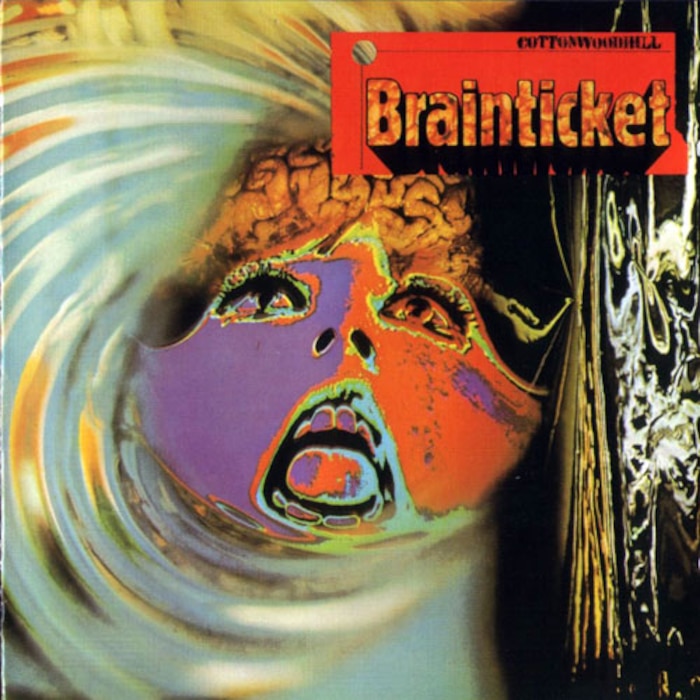
RBMA: And you've always been drawn towards exotic instruments.
VANDROOGENBROECK: Yes. I mean, Cottonwoodhill was a studio production based on a very psychological situation; it had to be aggressive, nervous, disturbed and intense. Even there though, one of the extra compositions, “Places of Light” already had exotic sounds on it with the kalimba tuned on a minor scale.
Besides of playing rock music, we used to sit down in a calm environment with candle light and enjoy playing small natural instruments like the kalimba, bongos, and acoustic guitar. We enjoyed natural sounds and nature. Later, some of us became more and more drawn towards African, Balinese and Indian music - especially because of the mood that they created. We became more and more involved in deeply studying those cultures.
I personally liked the contrast between heavy electric rock and the soft and quiet moods of nature and natural archaic instruments. One may say that I liked to look backwards to the roots of music... I wanted to know what the music sounded like in Atlantis, ancient Africa, Egypt and Mesopotamia - stuff far behind our times. I always thought the vibration of a string, of a skin, of a wind instrument made one sometimes discover the vibration of the soul.
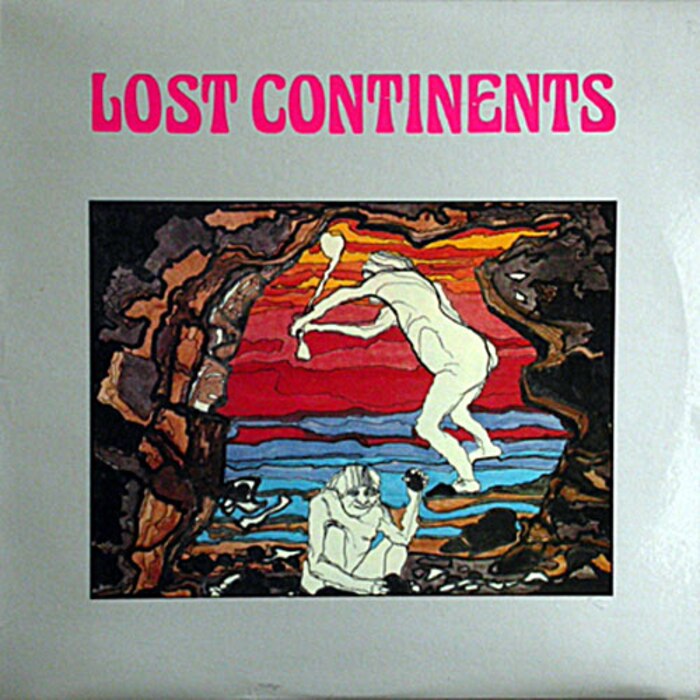
RBMA: And you lived, among other places, in Italy, Congo, Mexico, and Bali. Were you learning instruments in all these places?
VANDROOGENBROECK: I went to Congo when I was 16, where I had the opportunity to get familiar with the local music, mostly percussions and kalimba (thumb piano), which is a fascinating instrument mostly played by blind people at that time.
Later, as I continued to study antique music, I visited all the tombs, pyramids and temples of Egypt, trying to find out what the music must have been in those antique times.
Then, much later, I went to Bali for some time to study gamelan music as well as the selunding and grantang, a type of gamelan made out of bamboos. I had to learn how to make the instruments before I could learn how to play them. This was one of my greatest experiences and it absolutely changed the way I look at music.
I was also interested in Indian music, but unfortunately I never was able to go to India. For a time I had an Indian teacher in Germany, which is where I learned to play sitar and the basics of Indian classic music. This was around the 70s when the sitar became quite popular in rock music, probably because of the Beatles.
I wanted to know what the music sounded like in Atlantis.
RBMA: So out of all that you learned, what is the instrument nearest to your heart?
VANDROOGENBROECK: I am actually a jazz pianist, and the piano will always be my main instrument. I played the flute to experience pure melody, one melody line at a time. Simply wonderful. To get contact with pure vibrations, the sitar when well tuned, brings a whole world of harmonics to surround you. It feels great to play blues on the organ and the synthesizer brings me an all new world of unimaginable frequencies. I would say that these are all my favorite instruments, depending on the mood that I am in at a certain moment.
RBMA: Can you give me some of the players and musicians who influenced you throughout the 70s?
VANDROOGENBROECK: Well, before the 70s, I was following most of the jazz musicians like Coltrane, Jazz Messengers, Miles Davis and so on... Miles Davis was the first to experiment with rock rhythms, going out of the traditional 4/4 time signature used in Jazz. He resonated with me, but I also felt that something new was coming up in music. One night, listening to the Voice of America radio station, I heard Jimi Hendrix, and the Beatles' Sergeant Pepper album. Man... That blew my mind. On the German side came, along came this Krautrock movement, and I loved to hear Klaus Schultze and his synthesizer works. Moog and AKS and ARP synths were a big revolution in sound.
RBMA: As Brainticket gradually drifted away, you began doing numerous solo records. Particularly for a Munich label called Coloursound. Can you explain the label briefly?
VANDROOGENBROECK: Coloursound record company was created in Germany to produce records of ambient music for documentaries, films, and for TV producers to use as underlay music for their projects. Those records, LPs at the time, were stored in sound libraries of TV stations and radio stations all over the world. Those LPs were not to be sold to the public. For the artist, this was open to any kind of music imaginable. It gave me the possibility to explore and study all kinds of directions I liked. I let my creativity through music go from imaginative lost continents, to old Egypt, to Mesopotamia, to the Middle Ages to modern times with computer music productions and space fantasies. I had complete liberty in my work. Later, the company was sold and somehow, those records began to appear in public.
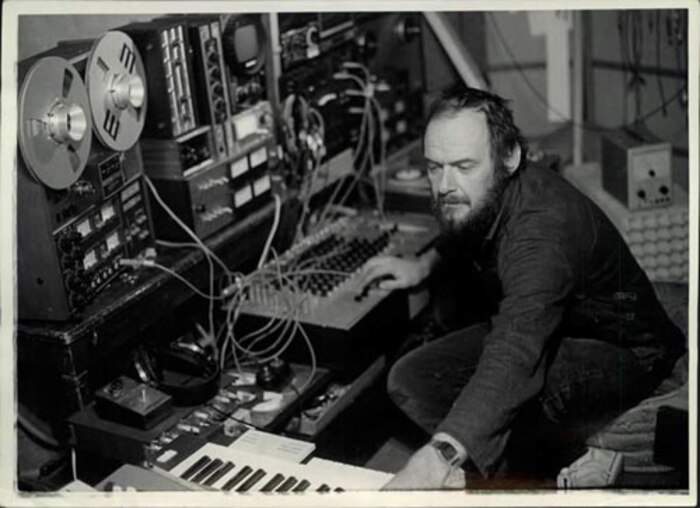
RBMA: How did you go about choosing themes? For instance, Birth Of Earth or Digital Project?
VANDROOGENBROECK: Ultimately, I had the freedom to choose themes that inspired me the most. The movie Fantasia from Walt Disney inspired me a lot thanks to the music of Stravinsky, and the fact that they adapted the film with images of the birth of Earth. Digital Project about my first encounter with the Apple II computer.
RBMA: What types of equipment were you primarily using for these records?
VANDROOGENBROECK: At that time, I could only afford me a Revox two-track tape recorder and recorded natural sounds like piano, flute, a wind harp that I constructed, and small percussion instruments. Later, I bought an Apple II computer and worked with Roland's first sample device. Much later, I bought a Teac four-track recorder. I made electronic sounds with a short wave radio until I could afford one day to buy the famous portable [EMS] Synthi A. I never thought that one day we would have all the types of gear we have now, with infinite tracks, all kinds of synths, iPods, iPads. This is absolutely amazing!
But in some way, I must say that our creativity was at its best when we were constrained by fewer possibilities 40 years ago. I have moments today that I find myself with so many possibilities, that sometimes I don't know what to do anymore. Maybe it is just me.
RBMA: You recently celebrated your 74th birthday and went back out on the road with a newly
formed Brainticket. What was that experience like?
VANDROOGENBROECK: At the start I didn't believe that this would be possible but I can say now that this was one of my best experiences with Brainticket. Now ten, 20, 30, 35 years after, new blood flew in my veins. I was invited all over the place and the concerts were a huge success. People my age that were still huge fans of Brainticket mixed with young generations that wanted to learn from me, what I knew, and experience what I had done with music – with Brainticket, with Coloursound, with Balinese music, with sitar and flute and electronics.
I was invited all over the North American continent and towards the end, landed in Hollywood. I had a meeting with William Shatner, who also presented his latest music production about space that day.
Great young musicians recreated the mood of "Black Sand", "Places Of Light", and Celestial Ocean exactly as I conceived them. This was like a dream. A space rock invasion!
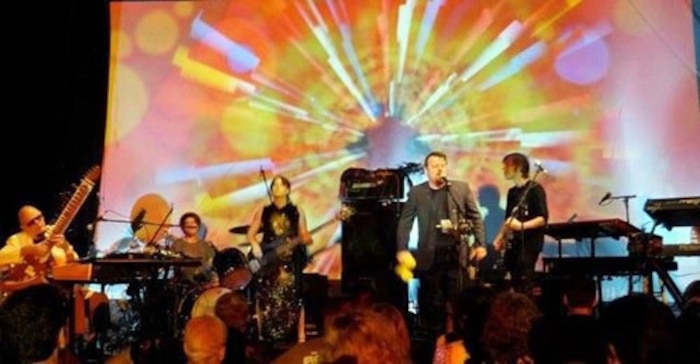
RBMA: So in general, you see a younger crowd gravitating towards your music. That must be encouraging.
VANDROOGENBROECK: Absolutely, the urge to learn new ways back from the source was huge. I never thought that Brainticket would have such an impact on various generations of audiences. Maybe because the concept of Brainticket has usually been part of some kind of underground, and this created a huge mystery.
RBMA: So nowadays, what keeps you inspired? What projects are you working on?
VANDROOGENBROECK: Nowadays, everything is possible, there is so much music going on, and so many technical possibilities are available. You don't have to be rich anymore to own a good synthesizer or a recording studio. Still, the human string has to vibrate, the inspiration has to be there, and the artist must be there to say something, how to say it, and to whom. I am working on projects that combine all those elements to create something new. It will not be Brainticket's Cottonwoodhill or Celestial Ocean, this has been done
and Brainticket is ever-changing. The world is more complex nowadays. Concepts are changing to something new. I think 2012 will maybe not be the end of the world, but it will certainly be the dawn of an old era giving way to make a place for a new universal order. Is it not the task of the artist to foreseen it?
